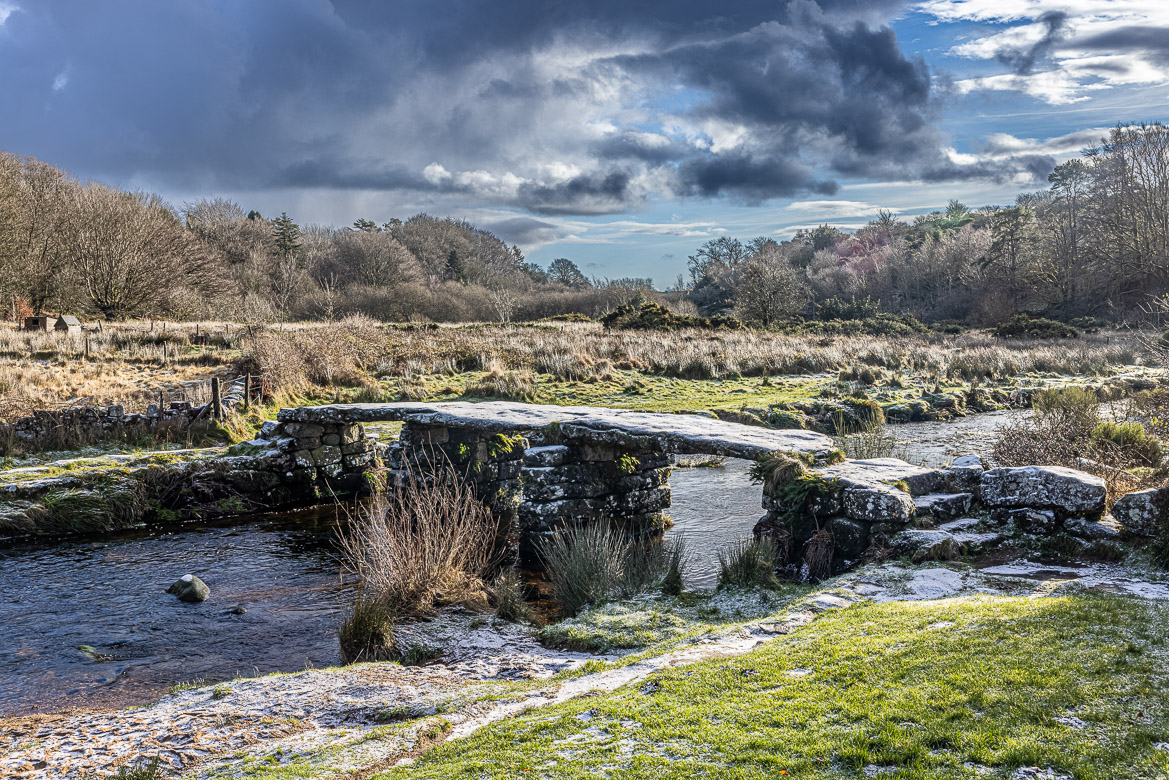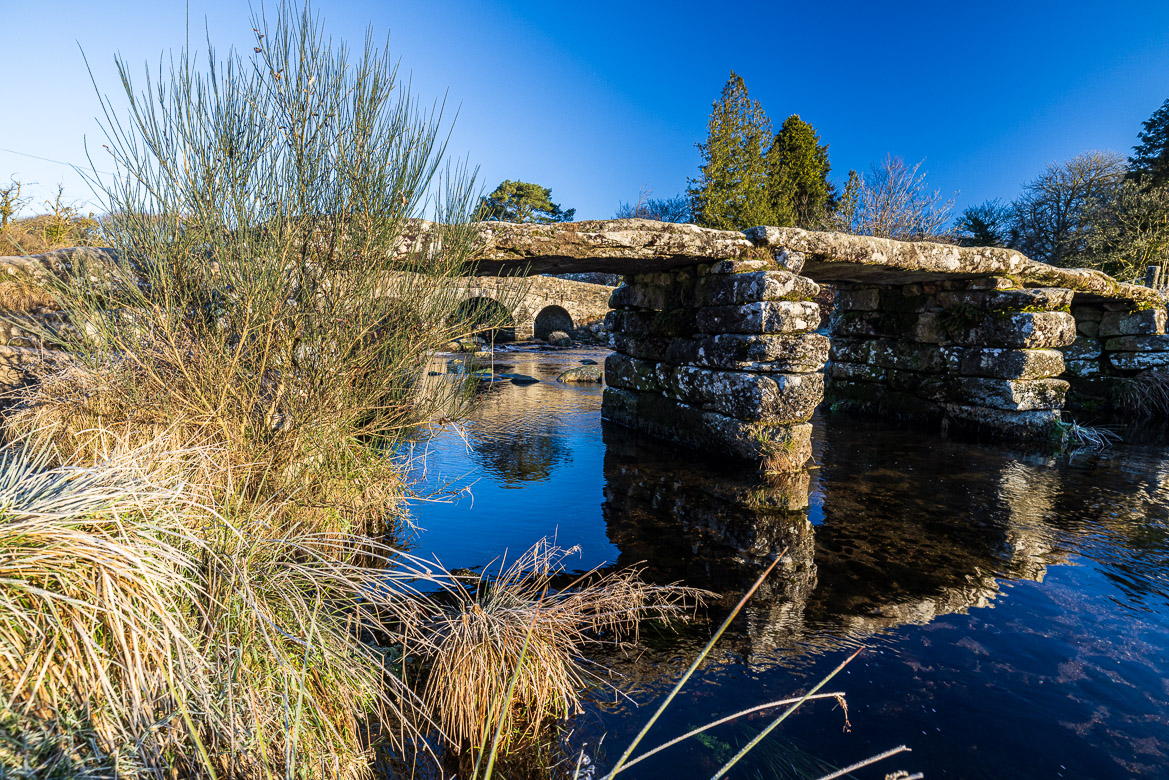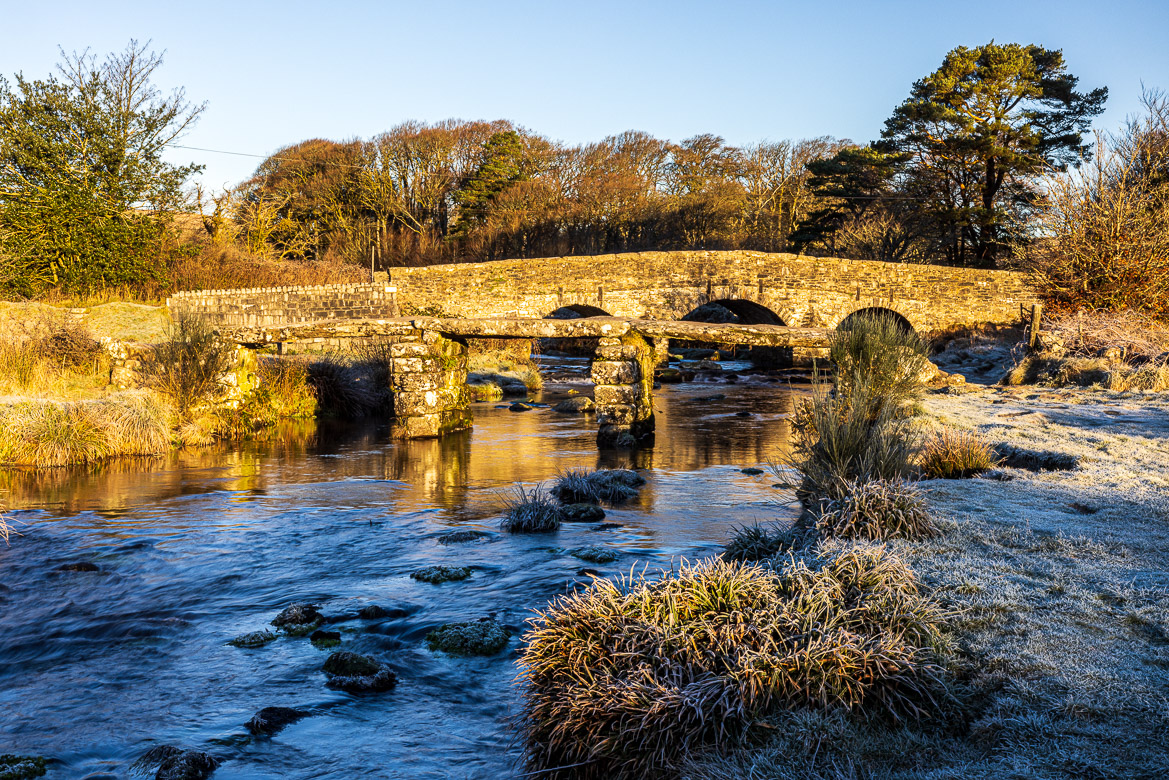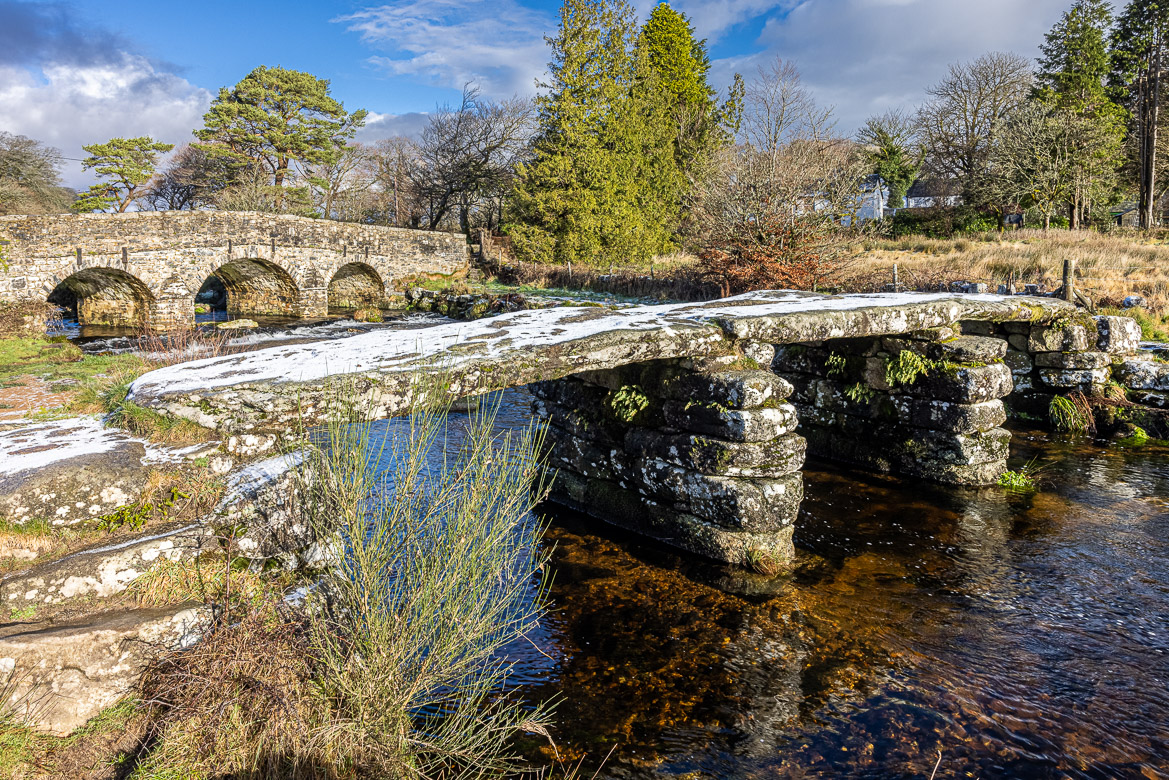
Clapper bridges are built by large flat slabs of stone, mostly granite, supported by stone piers or by the banks of streams and rivers. They were mainly built for people and packhorses, but a few are larger to take small carts. They are found on the moors and in other upland areas in the UK crossing over rivers or streams or manmade leats.
Most of the clapper bridges were erected in medieval times although some are newer. The word clapper derives from the Anglo-Saxon word cleaca, meaning “bridging the stepping stones”. This indicates that the first clapper bridges may have been formed of naturally occurring stepping stones, which were covered with flat slabs to make it easier to cross the river.
The Postbridge Clapper Bridge is a fine example of a bridge still standing. It was built in the 13th century for the transportation of Dartmoor tin by packhorses and is situated in the middle of Dartmoor. Postbridge is a small hamlet near the bridge. The large stone slabs are locally called posts, and that is how the little village got its name. The slabs are more than 4 metres long and 2 metres wide and each slab weighs around 8 tonnes. The total span of the bridge is 42 feet or 12.5 metres.


Nearby a new bridge was built in the 1780s. To me the new bridge is also very attractive with two piers with pointed cutwaters. I was capturing the clapper bridge with the tripod set on the parapet of the new bridge.
Postbridge is definitely the most photographed clapper bridge on Dartmoor. It is very beautiful, but the main reason for its fame is that it is so accessible, situated only a few metres away from the new bridge and road, so many tourists stop for selfies with the clapper bridge in the background.
Read more about clapper bridges in my portfolio showcase about Dartmoor Clapper Bridges.

